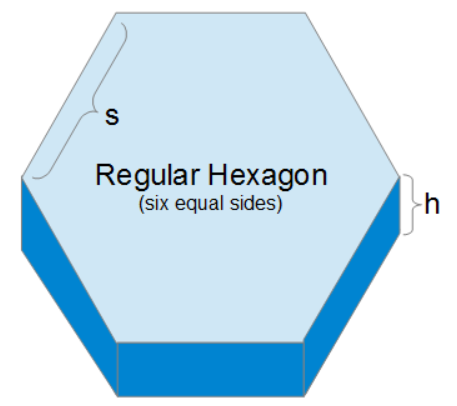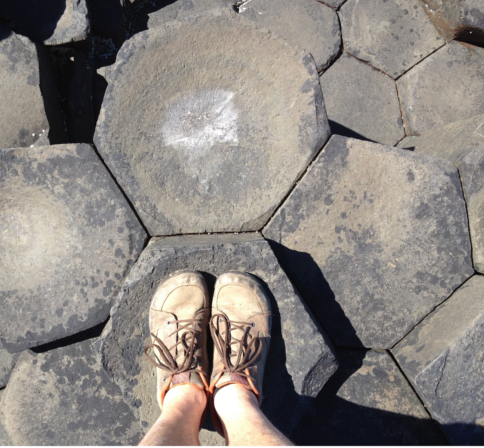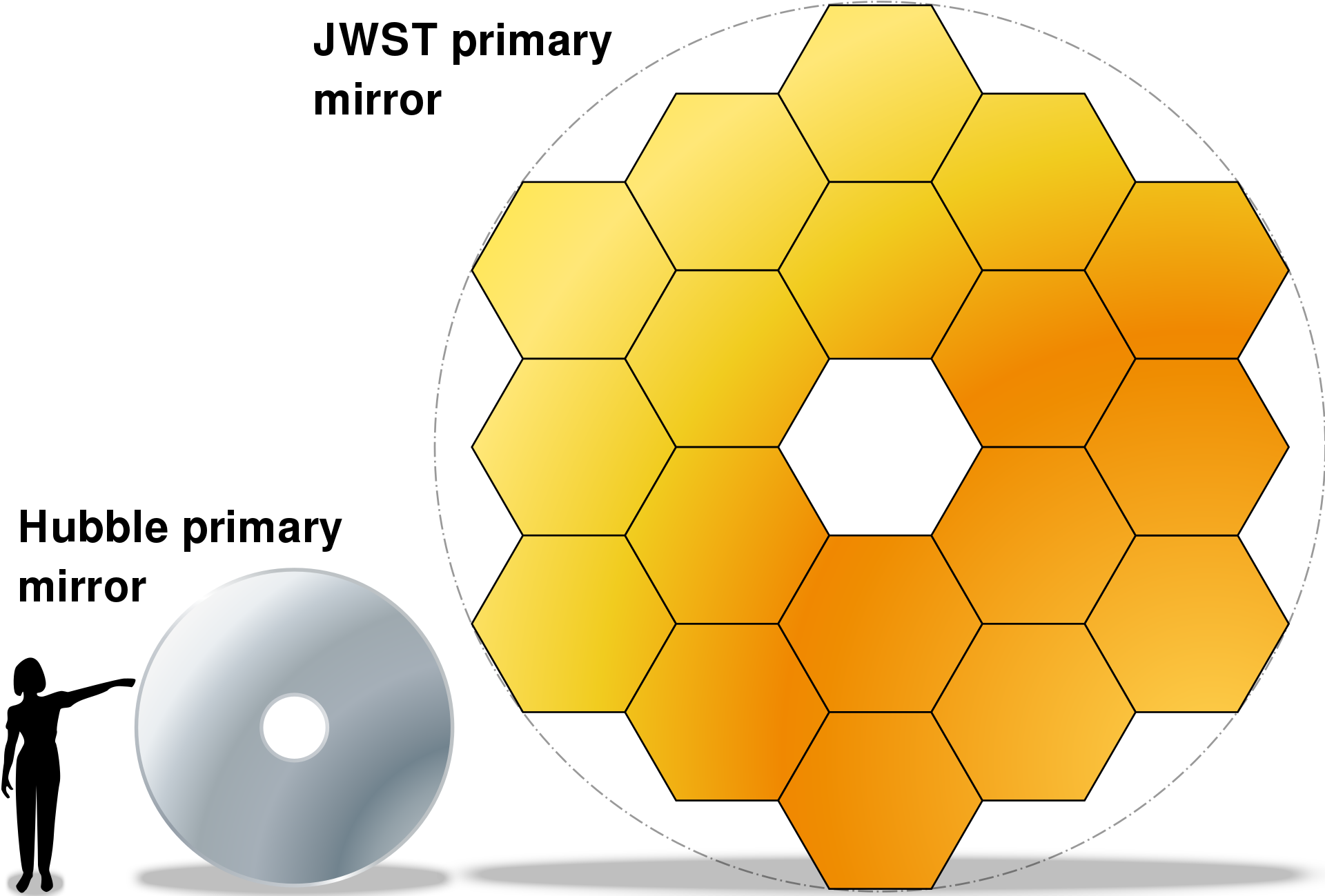Hexagon Column Surface Area
Tags | |
UUID | 0342e593-acda-11e7-9770-bc764e2038f2 |
The Hexagon Surface Area calculator computes the surface area of a regular Hexagon shaped object (e.g. column, prism, gem). A regular hexagon Regular Hexagon column has ends that are six sided regular polygons where all of the sides are the same length (s) and a column height (h). See diagram.
Regular Hexagon column has ends that are six sided regular polygons where all of the sides are the same length (s) and a column height (h). See diagram.
INSTRUCTIONS: Choose units and enter the following:
- (s) Length of Sides of Hexagon
- (h) Height of Shape
Hexagon Surface Area (SA): The surface area (SA) is returned in square meters. However, this can be automatically converted to other area units via the pull-down menu.
The Math / Science
The Surface area of a Hexagon shape (see diagram) is the sum of:
- Hexagon Area on the top.
- Hexagon Area on the bottom.
- The sum of the six rectangle areas on the side where the area of each rectangle is A = s *h
Therefore, the surface area of a hexagon is:
SA = 2 • (3/2 • √3 • s2) + 6 • s • h
This simplifies to:
SA = 3 • √3 • s2 + 6 • s • h
Hexagons appear in mathematics and in nature (e.g. honey comb of honey bees). The volcanic columns at the Giant's Causeway in North Ireland have regular shapes including regular hexagons.
A hexagon is a polygon with six sides and six angles. It is a two-dimensional geometric shape formed by connecting six straight line segments (sides) in a closed loop. Each interior angle of a regular hexagon (where all sides and angles are equal) measures 120 degrees. The sum of the interior angles in any hexagon is 720 degrees.
Hexagon Calculators
- Hexagon Area: Area of regular hexagon based on length of sides
- Hexagon Side Length from Area: Length of a regular hexagon's sides based on the area.
- Hexagon Volume: Volume of Hexagon Column based on dimensions.
- Hexagon Column Surface Area: Surface area of Hexagon Column based on dimensions.
- Hexagon Column Mass: Mass or weight of Hexagon Column based on dimensions and density.
- Sum of Hexagon Areas: Surface Area of interconnected hexagons based on side length and number of hexagons.
- Hexagon Planter: Volume and surface area of a hexagon shaped planter and the amount of soil needed to fill it.
Hexagons in Nature and Science
Hexagons are encountered in various natural and man-made contexts. In nature, honeycombs constructed by bees often exhibit a hexagonal pattern because it is an efficient way to fill space with the least amount of material. In geometry and design, hexagons are commonly used in patterns, tiling, and architectural structures. They also appear in everyday objects, such as nuts and bolts, and are widely used in fields like science, engineering, and mathematics.
 Giant's Causeway's hexagons: Using this equation and the fact that the shoe in the picture is approximately 12" long and that the side of the hexagon is approximately the length of the shoe, the AREA of these regular hexagons is 2.5 ft2.
Giant's Causeway's hexagons: Using this equation and the fact that the shoe in the picture is approximately 12" long and that the side of the hexagon is approximately the length of the shoe, the AREA of these regular hexagons is 2.5 ft2.
Hexagons were also used by NASA in the James Webb Space Telescope.

Image provide by: Bobarino - Own work based on: File:JWST-HST-primary-mirrors.jpg a NASA public domain image, CC BY-SA 3.0
The side of each JWST is approximately 0.737 meters. Use the sum of hexagon areas (CLICK HERE) to compute the total area of the 18 hexagon mirrors. The primary mirror of the Hubble Space Telescope is 2.4 meters in diameter. Use the area of a circle calculator (CLICK HERE) to compute the area of the Hubble Space Telescope primary mirror.
Collections
- Comments
- Attachments
- Stats
No comments |

